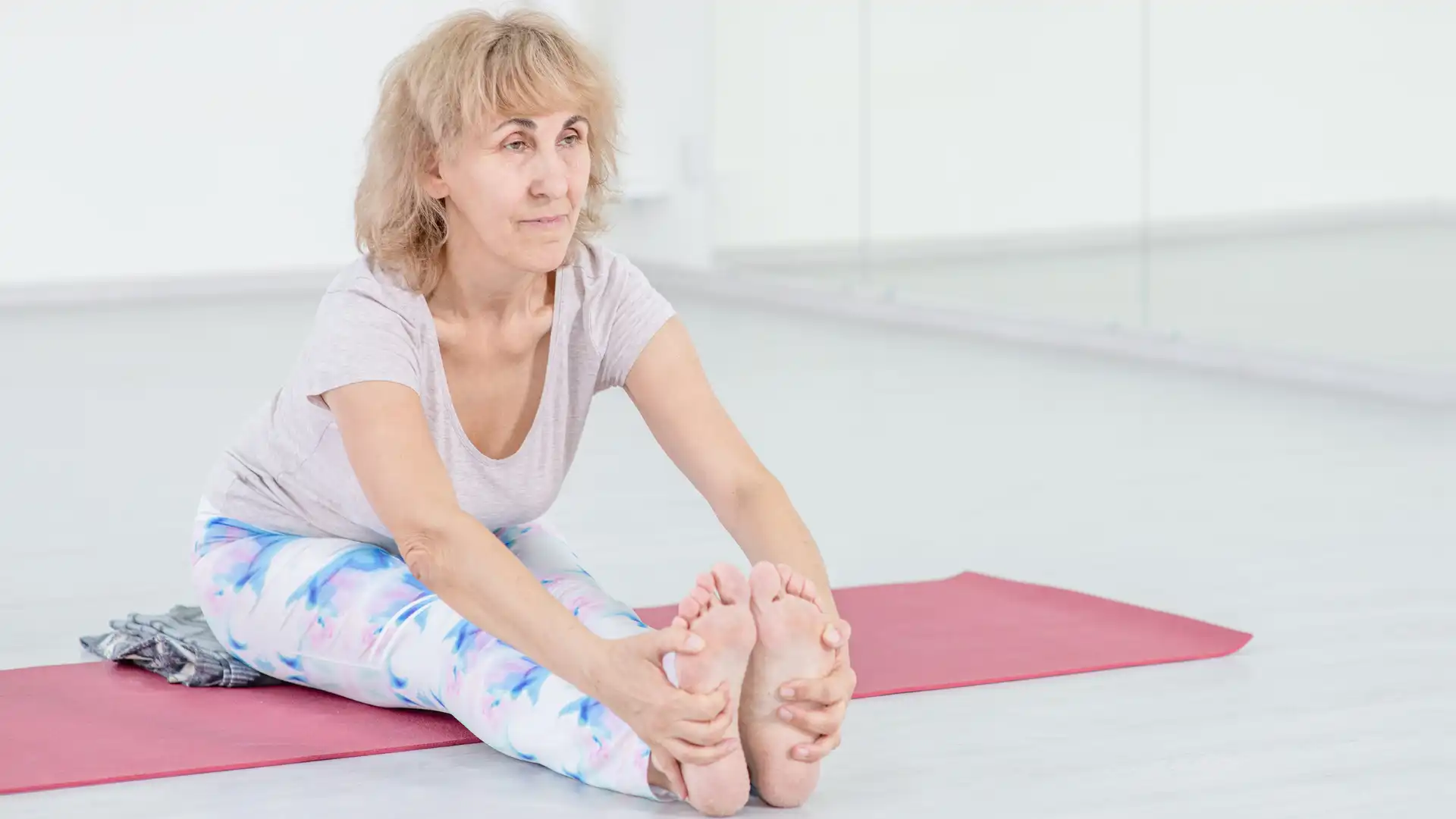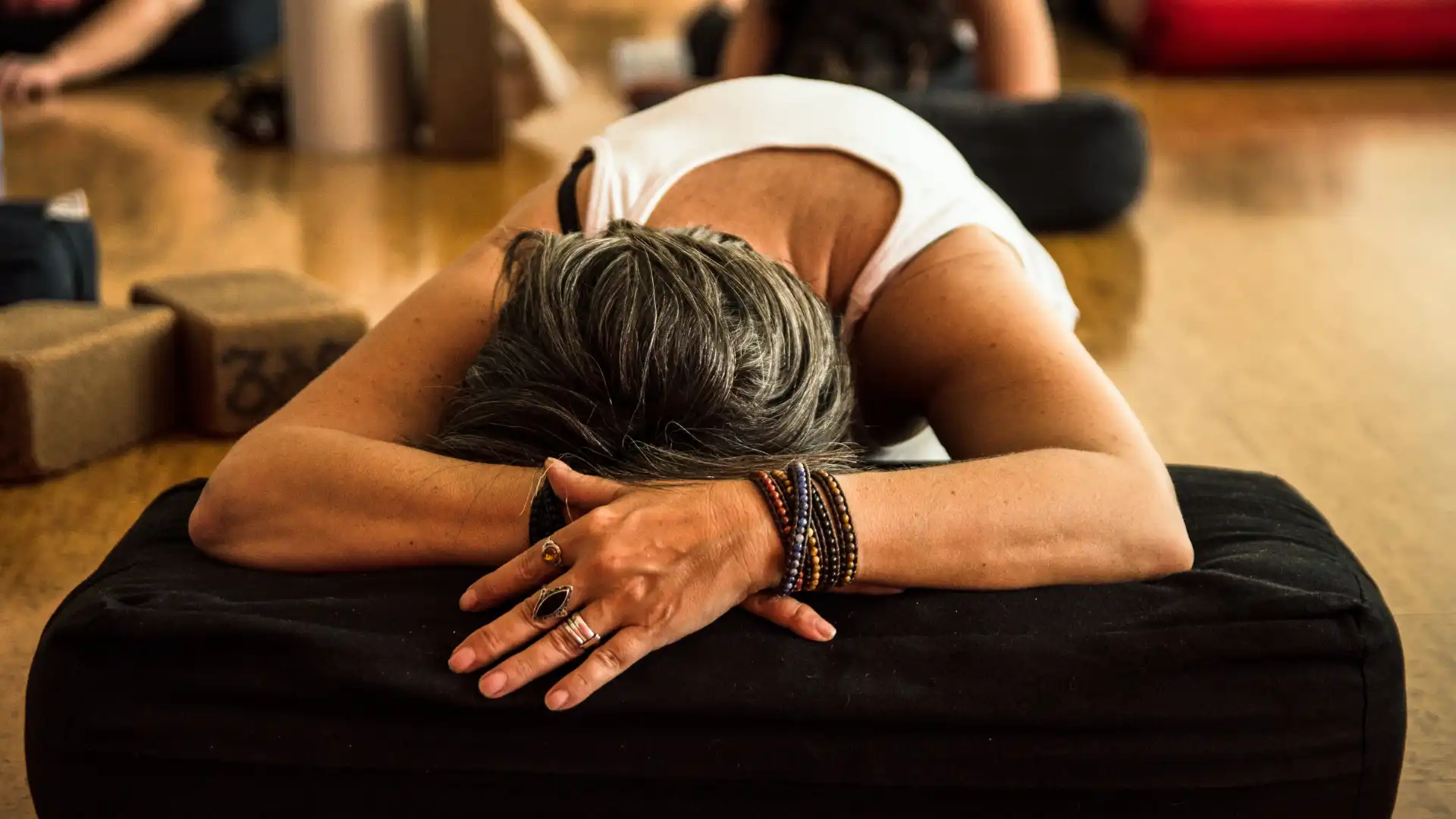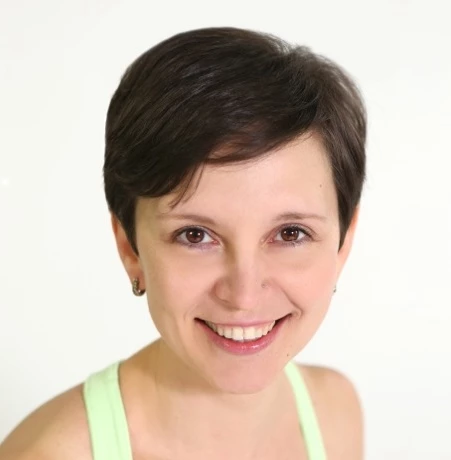Sleep for Heart Health: Calm Your Nervous System with Yoga for Better Sleep

Did you know that each year heart attacks spike on Mondays following the switch to Daylight Savings time? For example, a study conducted in the state of Michigan demonstrated that “the Monday following springtime changes was associated with a 24 percent increase in daily AMI (acute myocardial infarction) counts, and the Tuesday following fall changes was conversely associated with a 21 percent reduction. No other weekdays in the weeks following DST changes demonstrated significant associations.”(1) In spring, you lose one hour of sleep, and in the fall, you gain one hour, and just one hour of sleep loss or sleep gain seems to have a profound effect on the heart.

Matthew Walker, Ph.D., Director of UC Berkeley’s Sleep and Neuroimaging Lab, writes that the main reason this happens is that lack of sleep is linked to the activity of sympathetic nervous system: “ … every experiment that had investigated the impact of deficient sleep on the human body has observed an overactive sympathetic nervous system.” (2)
The sympathetic nervous system (SNS) gets activated whenever you need to mobilize your resources and deal with physical and mental challenges. This is called sympathetic activation or “fight-or-flight” mode. This is like pressing a gas pedal in your car. When you need to slow down, you “put your foot on the brake,” shifting into “rest-and-digest” mode, the domain of the parasympathetic nervous system.
As you drive your vehicle of a body throughout the day, your foot is always either pressing on the gas pedal or applying the brake. The problems arise when you get stuck in “drive mode” for too long. “Like a car engine that is revved to a shrieking extreme for sustained periods of time, your sympathetic nervous system is floored into perpetual overdrive by a lack of sleep. … Through this central pathway of an overactive sympathetic nervous system, sleep deprivation triggers a domino effect that will spread like a wave of health damage throughout your body.”(2)
An overactive SNS has a profound effect on your cardiovascular system in a number of ways:
-
A sleep-deprived heart beats faster, which leads to increased blood pressure.
-
The levels of cortisol (a stress hormone) increase, which triggers the constriction of blood vessels and leads to an even greater increase in blood pressure.
-
The growth hormone that surges at night and rebuilds the lining of blood vessels is shut off, which means that repair of fractured vessels stops.
This cascading effect can lead to vessels rupturing, which can manifest as a heart attack or a stroke. As a result, “adults forty-five years or older who sleep fewer than six hours a night are 200 percent more likely to have a heart attack or stroke during their lifetime, as compared with those sleeping seven to eight hours a night.” (1)

In contrast, during deep sleep, the brain communicates a calming signal to the SNS, which prevents the escalation of physiological stress. “Think of your deep NREM sleep as a natural form of nighttime blood-pressure management—one that averts hypertension and stroke.”(2)
This means that whenever you have a student who has elevated blood pressure or any other heart-related risk factors, you need to investigate and understand her sleep patterns and design a yoga practice that would help improve them. And since the overactive SNS is a major factor in cardiovascular wear and tear (and many other physiological issues), langhana yogic techniques that aim to reduce sympathetic activation will be most useful.
Also, read Your Brain on Meditation: Using Yoga’s Limbs to Achieve Pure Awareness by Olga Kabel.
Study with Olga Kabel and YogaUOnline – Yoga for Every Body: How to Adapt Yoga Poses for Different Situations, Conditions, and Purposes.
Reprinted with permission from Sequence Wiz.
 Educated as a school teacher, Olga Kabel has been teaching yoga for over 14 years. She completed multiple Yoga Teacher Training Programs but discovered the strongest connection to the Krishnamacharya/ T.K.V. Desikachar lineage. She had studied with Gary Kraftsow and American Viniyoga Institute (2004-2006) and received her Viniyoga Teacher diploma in July 2006 becoming an AVI-certified Yoga Therapist in April 2011. Olga is a founder and managing director of Sequence Wiz-a web-based yoga sequence builder that assists yoga teachers and yoga therapists in creating and organizing yoga practices. It also features simple, informational articles on how to sequence yoga practices for maximum effectiveness. Olga strongly believes in the healing power of this ancient discipline on every level: physical, psychological, and spiritual. She strives to make yoga practices accessible to students of any age, physical ability, and medical history specializing in helping her students relieve muscle aches and pains, manage stress and anxiety, and develop mental focus.
Educated as a school teacher, Olga Kabel has been teaching yoga for over 14 years. She completed multiple Yoga Teacher Training Programs but discovered the strongest connection to the Krishnamacharya/ T.K.V. Desikachar lineage. She had studied with Gary Kraftsow and American Viniyoga Institute (2004-2006) and received her Viniyoga Teacher diploma in July 2006 becoming an AVI-certified Yoga Therapist in April 2011. Olga is a founder and managing director of Sequence Wiz-a web-based yoga sequence builder that assists yoga teachers and yoga therapists in creating and organizing yoga practices. It also features simple, informational articles on how to sequence yoga practices for maximum effectiveness. Olga strongly believes in the healing power of this ancient discipline on every level: physical, psychological, and spiritual. She strives to make yoga practices accessible to students of any age, physical ability, and medical history specializing in helping her students relieve muscle aches and pains, manage stress and anxiety, and develop mental focus.
References
1. Daylight Savings Time and Myocardial Infarction by Amneet Sandhu, Milan Seth, and Hitinder S Gurm
2. Why Do We Sleep: Unlocking the Power of Sleep and Dreams by Matthew Walker




